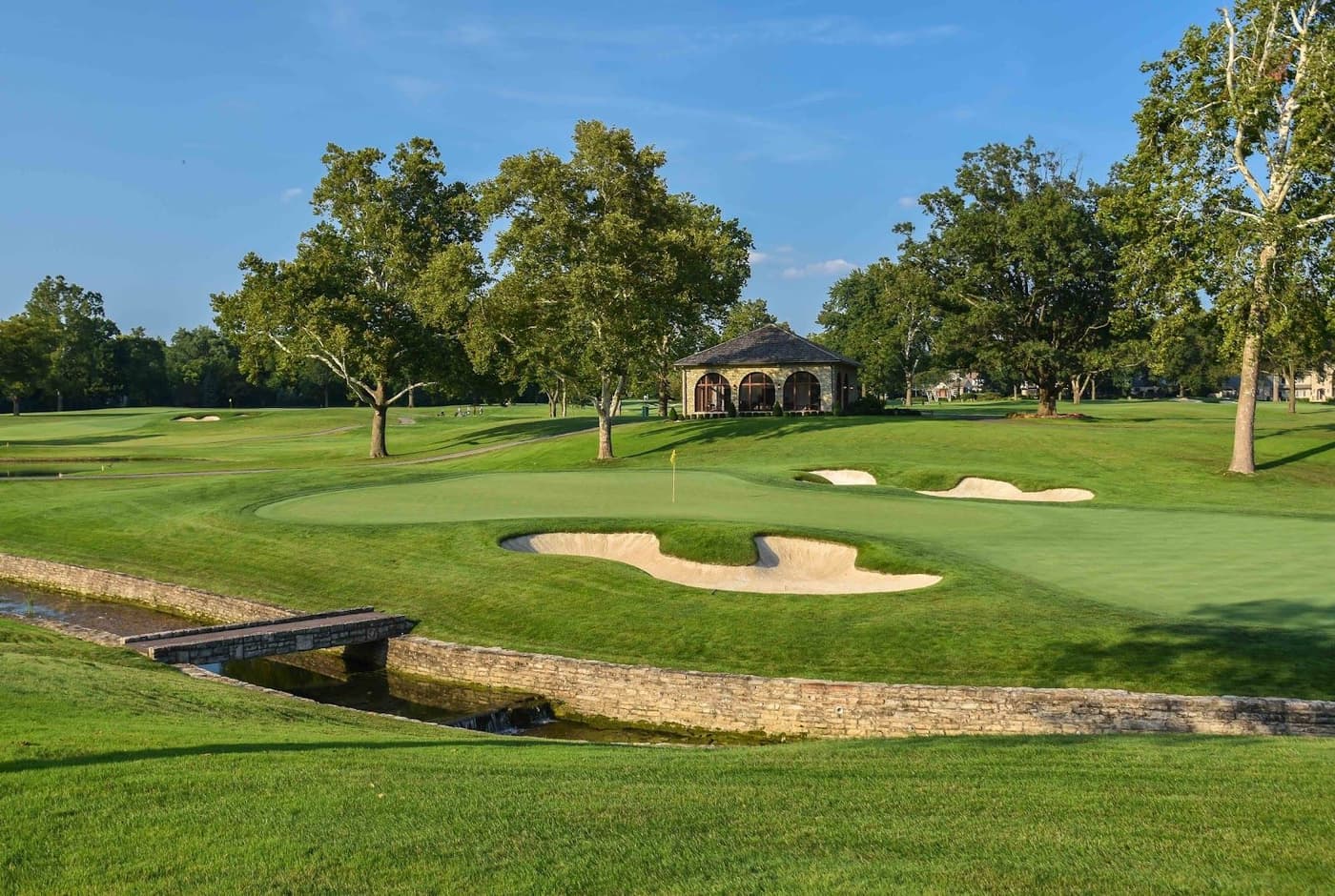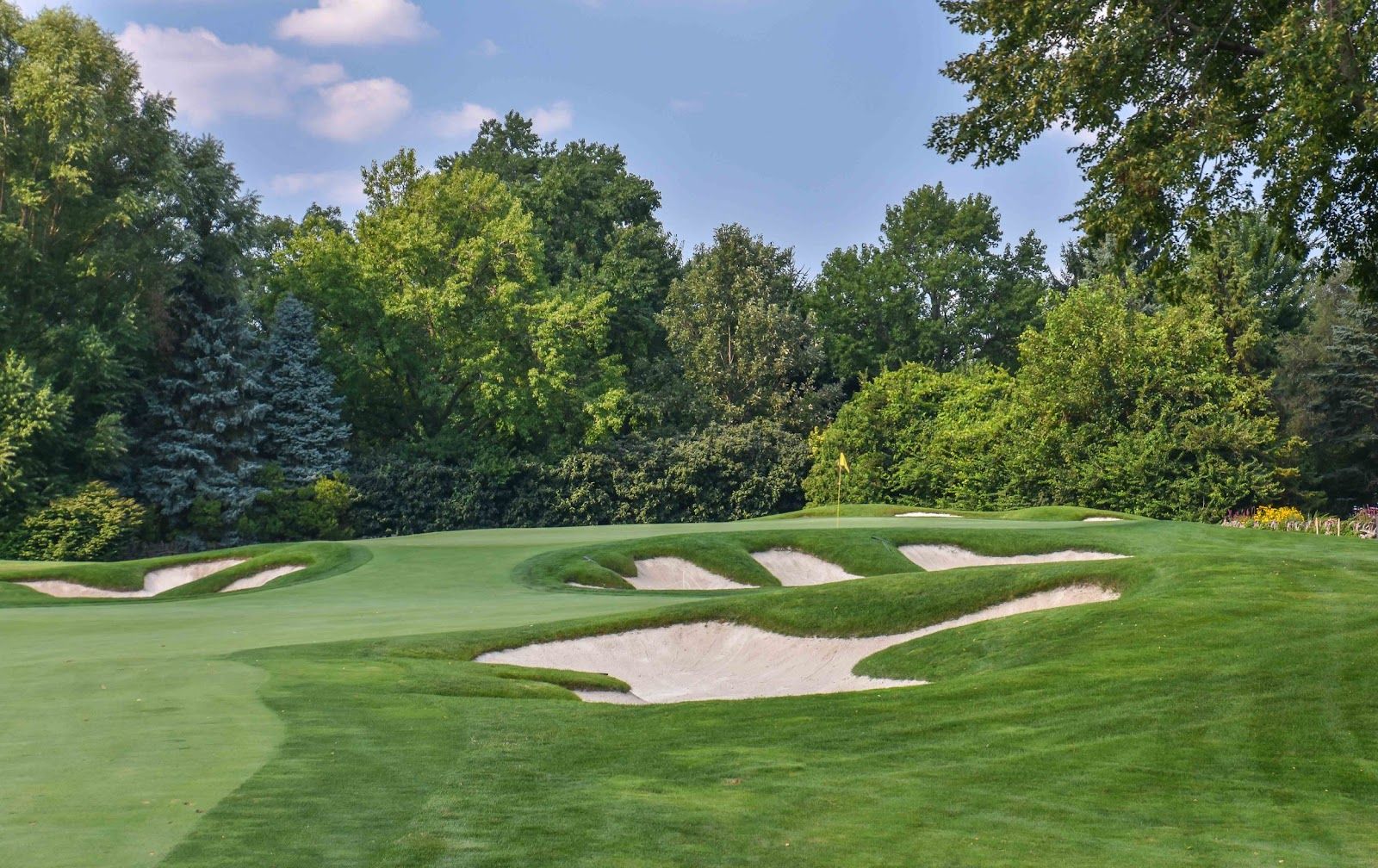- Courses
- North America
- USA
- Ohio

- Address2196 Riverside Dr, Columbus, OH 43221, USA
- Championships hosted
Scioto Country Club hosted the 1931 Ryder Cup matches between the USA and Great Britain. Team Captains were Walter Hagen (US) and Charles Whitcombe (GB). It was an easy American victory, USA 9 - GB 3, which was mainly attributed to the British missing three key players who could not compete due to the original Ryder Cup Deed of Trust stating that all members of both teams must be natives of, and resident in, the country they represented. The Ryder Cup was played at Moortown in 1929 and at Southport & Ainsdale in 1933.
According to The New World Atlas of Golf, “Scioto is the course where Jack Nicklaus developed from a pudgy junior to a world beater. Designed by Donald Ross in 1916, it carries all the hallmarks of his best works – greens nestling into the terrain, gentle slopes on the approaches, full use of the ground’s natural contours and plenty of subtle problems which demand thought rather than power.”
Scioto Country Club may well be where the young Golden Bear cut his golfing teeth, but we should not overlook the club’s impressive tournament history. It was here at Scioto in 1926 where Bobby Jones won the second of his four US Open titles, becoming the first man ever to hold both the US and British Open titles in the same year. Five years later, the club played host to the 1931 Ryder Cup, which the US squad won and, in 1950, Scioto hosted the PGA Championship, which, as it turned out, was not the spectacle that many had hoped for.
Donald Ross originally laid out the course at Scioto Country Club, but today it’s really only the routing that can be attributed to Ross because Dick Wilson made extensive changes to Scioto in the early 1960s.
Mike Stachura, writing in American Classic Courses: “1953: Jack Nicklaus, playing with his father [at Scioto] and breaking up his front and back nines to run home and eat dinner, shoots under 70 for the first time at the age of 13, making an eagle on the final hole.”
In 2008, Jack Nicklaus and Michael Hurdzan completed a renovation that largely involved rebuilding Dick Wilson’s greens to USGA standard. Thirteen years later, Andrew Green was engaged to primarily rework the greens, lowering them to their original grade. Interestingly, the architect used a 1920s drawing from cartoonist Dudley Fisher to assist with a project which also involved the levelling of tees, widening of fairway landing areas, and reconstructing bunkers using the Better Billy Bunker method.
Course Reviews
Leave a Review
This course has not been reviewed.
If you have played this course, consider .
Thanks for the review
Your review has been successfully submitted and will be reviewed for approval.
Course Reviewed
You’ve already submitted a review for this course.
Course Architect
View All
Donald Ross worked with Old Tom Morris at St Andrews in 1893 then spent part of the following season at Carnoustie before returning to serve under the Dornoch club secretary John Sutherland.






